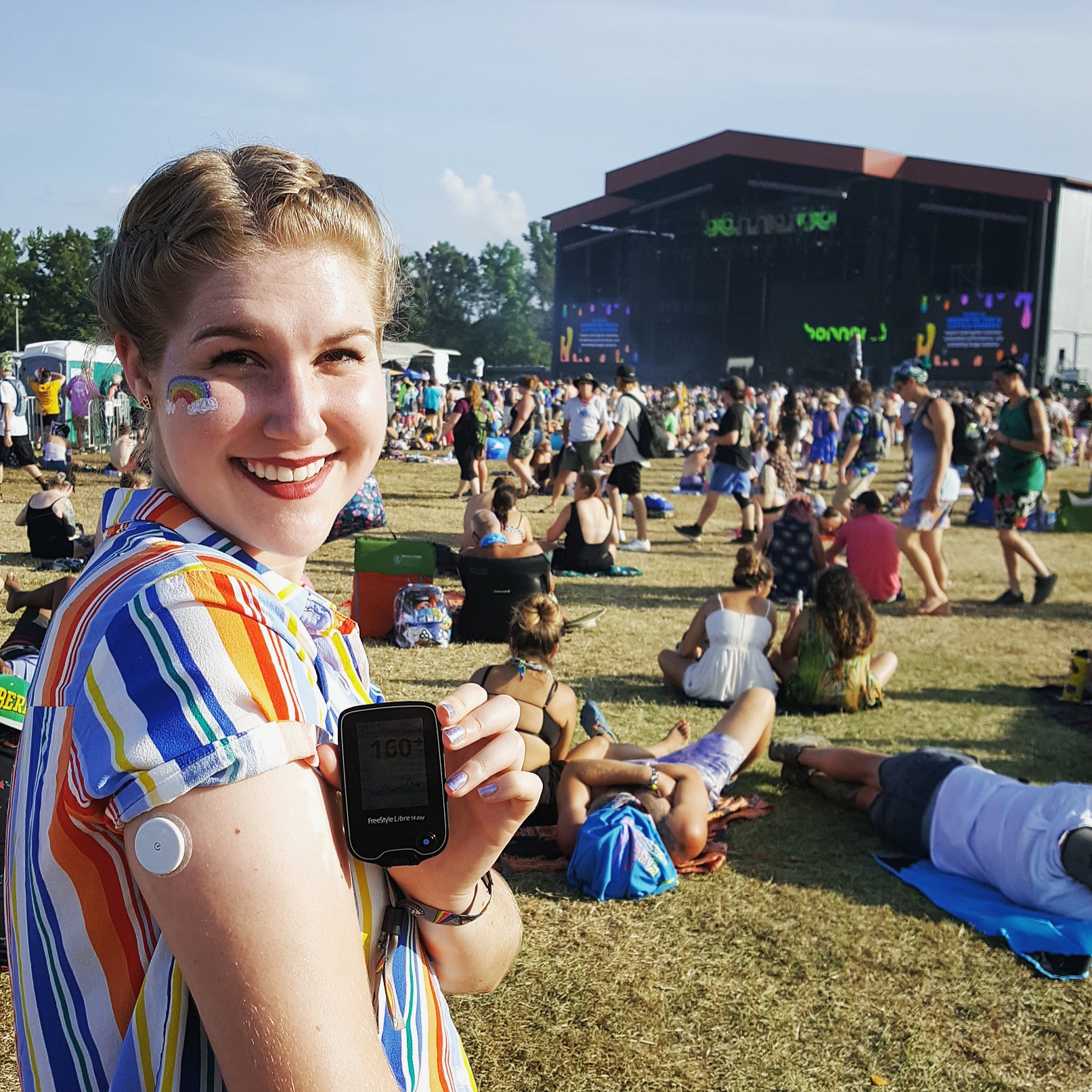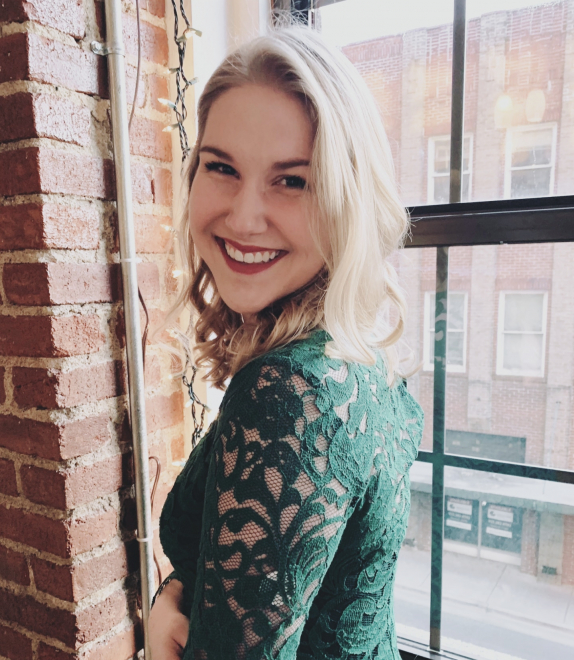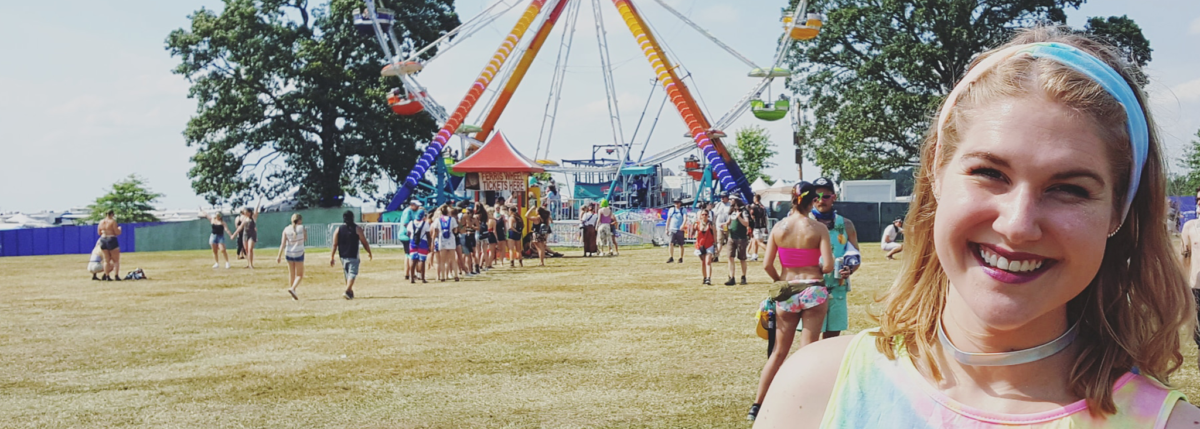Hannah’s Story: How to Manage T1D in College
Hannah Manis is an Abbott Spokesperson and this content was created as part of a partnership between Beyond Type 1 and Abbott Diabetes Care Inc. For more information on managing type 1 diabetes in college, sign up for Beyond Type 1: College Edition, our email series on all things college + type 1 diabetes (T1D).
Hannah Manis has been living with type 1 diabetes for most of her life. The recent college graduate was diagnosed in November of 2000, when she was only 3 years old. At the time she was showing all the classic early symptoms of T1D: excessive thirst, upset stomach and becoming progressively sick. Her parents took her to a local pediatrician who referred her to the Erlanger Children’s Hospital in Chattanooga, Tennessee.
“When they tested my blood sugar it was in the mid-700s… I have flashbacks of being in the hospital. I remember that I was really scared because all of a sudden I was just being poked all the time with different needles, and there were people waking me up in the night all the time to check my blood sugar. So all of that changed… My whole life changed in a single day.”
For Hannah, like many young adults but especially for those with diabetes, one of the biggest transitions in her life was when she went off to college. She remembers that her parents were even more worried than she was.
 “I was honestly taking care of myself without my parents looking over my shoulder by the time I was around 12. So, I was not as afraid as they were for me to leave home. But it was honestly the first time I was truly on my own. They weren’t going to check up and make sure I was good.”
“I was honestly taking care of myself without my parents looking over my shoulder by the time I was around 12. So, I was not as afraid as they were for me to leave home. But it was honestly the first time I was truly on my own. They weren’t going to check up and make sure I was good.”
The adjustment period got off to a rough start.
“The first night that I was [at college], I had a pump malfunction overnight, and it didn’t give me any alarms or anything. And so, I went without insulin for about six hours. I woke up, and I was so sick and my blood sugar was in the 400s. It was the first moment that I said okay, I’m by myself, I’ve got to figure this out … Diabetes can definitely throw you some curve balls, and that was the first one of them that I was truly by myself for. But you know, you learn to suck it up and just take care of it.”
In some ways, going to college was like starting all over again for Hannah with diabetes.
“In my childhood town it’s only 18,000 people… and basically everyone knew that I had diabetes. Going to a completely new place, people would stare at devices on my arms and I hadn’t had that in a long time. That was definitely new again. And then there was learning how to talk to your professors about your diabetes, and that you may need certain accommodations because of it. I’d always had a 504 plan through my school system. And the same nurses from the time I was in kindergarten. So it was new doing that all on my own, and just having to teach new people about diabetes all over again. And I don’t mind it honestly, I kind of enjoy it.”
Perhaps the biggest change in Hannah’s life came halfway through college in 2017—that’s when she started using a continuous glucose monitor (CGM). Hannah started using the FreeStyle Libre system and went from doing 8 fingersticks* a day to scanning a sensor on the back of her arm with a reader to get her blood glucose readings.
“Learning the device itself wasn’t very difficult. The hardest part for me was letting go of the control that I thought I had doing manual fingersticks… I had to remind myself ‘This device is going to help you. It’ll be so much easier, so just trust it.’ And it has been so much easier taking care of my blood glucose levels since I started.”
With her FreeStyle Libre 14 day system, Hannah was able to avoid severe hyper- and hypoglycemic episodes as well as check her blood glucose levels much more often throughout the day.
“When I’m in a long lecture I can pull out my phone really quickly and scan and make sure I’m good. Or when I’m out with friends at a restaurant, people honestly don’t even notice that I’m checking my blood glucose level anymore… I just feel a lot more comfortable and feel like I can do it so much more quickly and not have to stop what I’m doing in order to take care of myself. And they just now got the FreeStyle LibreLink†App on Android smartphones to do the scan on the phone. I’m checking throughout the day, so I’m able to see the graph of where my blood glucose level is going, and then the directional arrows allow me to see if I’m going in a direction quickly or somewhat quickly, and I can take different actions based on that.”
Hannah just graduated from East Tennessee State University (ETSU) with a B.S. in Psychology and a specialization in Clinical Psychology. She’ll be pursuing a Master’s Degree in Clinical Psychology from the University of Dayton this fall, and her plan is to go on to obtain a PhD after that. Now that she has completed her undergraduate degree, she has a lot of advice for students with type 1 diabetes just entering college for the first time:
- Get Involved in a Type 1 Diabetes Club—Most colleges have one and if there’s not one already, start one! It’s so important to be around fellow people with diabetes because it can be a very isolating disease. But if you are around people with diabetes or even if you just go online on Instagram or Facebook and follow people with diabetes, it helps you realize that you’re not alone in this. And that you not having good blood glucose levels in a day is okay. None of us are perfect and we’re all still figuring it out.
- Be Open About Your Diabetes—Make sure everyone around you knows that you have diabetes, and what to look for if you are acting differently… especially if you have a roommate. Make sure that they know that you have diabetes and tell them what your symptoms are if you’re low or high. And make sure everyone around you knows where your Glucagon is. All of my friends know it’s either in my purse or in my backpack, whichever one I’m carrying at the time.
- Enroll in Disability Services—Those will be the people who help you talk to your professors, if for example you have a hypo or hyper event around test time, you can get that test rescheduled, but if your professors don’t know that you have diabetes they’re not going to be able to make those accommodations that you might need.
- Prepare for Stress—Stress is rampant in college, and you have to find ways to deal with and minimize it, because that’s going to affect your blood glucose level whether you want it to or not. It’s important to learn how to manage stress and seek on-campus counselors. If you are struggling at any point, not just diabetes, but anything else. Any kind of stressor. Emotional stress is going to affect your blood glucose level, so just don’t be afraid to get the help that you need.
- Don’t Be Ashamed of Your Diabetes—Help educate others because the more awareness, the better. And celebrate yourself and your hard work. Just take it day by day or even hour by hour. Sometimes you have to do that, but it’s all a learning curves, and you just do it day by day.
- If You Have Access to a CGM, GET ONE—If you don’t have a CGM, do the research to learn about the benefits of CGM. Just get the technology that’s going to make your life easier. For me that’s the FreeStyle Libre 14 day system. And I am happy keeping with this one for the rest of my life until there’s a cure. I was once asked by some employees at ADA, if I had to put it into a relationship status—and I said I would definitely say I was in a committed, happy relationship with my Freestyle Libre 14 day system.
Hannah Manis is an Abbott Spokesperson and this content was created as part of a partnership between Beyond Type 1 and Abbott Diabetes Care Inc, an active partner of Beyond Type 1 at the time of publication.
*Fingersticks are required for treatment decisions when you see Check Blood Glucose symbol, when symptoms do not match system readings, when you suspect readings may be inaccurate, or when you experience symptoms that may be due to high or low blood glucose.
†The FreeStyle LibreLink app is compatible with NFC-enabled smartphones running Android OS 5.0 or higher and iPhone 7 or later running iOS 11 or later. Use of the FreeStyle LibreLink app requires registration with LibreView, a service provided by Abbott and Newyu, Inc.
The FreeStyle LibreLink app and the FreeStyle Libre and FreeStyle Libre 14 Day reader have similar but not identical features. Fingersticks are required for treatment decisions when you see Check Blood Glucose symbol, when symptoms do not match system readings, when you suspect readings may be inaccurate, or when you experience symptoms that may be due to high or low blood glucose. When using FreeStyle LibreLink app, access to a blood glucose monitoring system is required as the app does not provide one.
The FreeStyle LibreLink app and the FreeStyle Libre and FreeStyle Libre 14 Day reader have similar Indications and Important Safety Information
FreeStyle Libre and FreeStyle Libre 14 day Flash Glucose Monitoring systems are continuous glucose monitoring (CGM) devices indicated for replacing blood glucose testing and detecting trends and tracking patterns aiding in the detection of episodes of hyperglycemia and hypoglycemia, facilitating both acute and long-term therapy adjustments in persons (age 18 and older) with diabetes. The systems are intended for single patient use and require a prescription.
CONTRAINDICATIONS: Remove the sensor before MRI, CT scan, X-ray, or diathermy treatment.
WARNINGS/LIMITATIONS: Do not ignore symptoms that may be due to low or high blood glucose, hypoglycemic unawareness, or dehydration. Check sensor glucose readings with a blood glucose meter when Check Blood Glucose symbol appears, when symptoms do not match system readings, or when readings are suspected to be inaccurate. The system does not have alarms unless the sensor is scanned, and the system contains small parts that may be dangerous if swallowed. The system is not approved for pregnant women, persons on dialysis, or critically-ill population. Sensor placement is not approved for sites other than the back of the arm and standard precautions for transmission of blood borne pathogens should be taken. The built-in blood glucose meter is not for use on dehydrated, hypotensive, in shock, hyperglycemic-hyperosmolar state, with or without ketosis, neonates, critically-ill patients, or for diagnosis or screening of diabetes. When using FreeStyle LibreLink app, access to a blood glucose monitoring system is required as the app does not provide one. Review all product information before use or contact Abbott Toll Free (855-632-8658) or visit www.freestylelibre.us for detailed indications for use and safety information.
For full indications for use and safety information, see more here.
FreeStyle, Libre, and related brand marks are trademarks of Abbott Diabetes Care Inc. in various jurisdictions. Other trademarks are the property of their respective owners.





